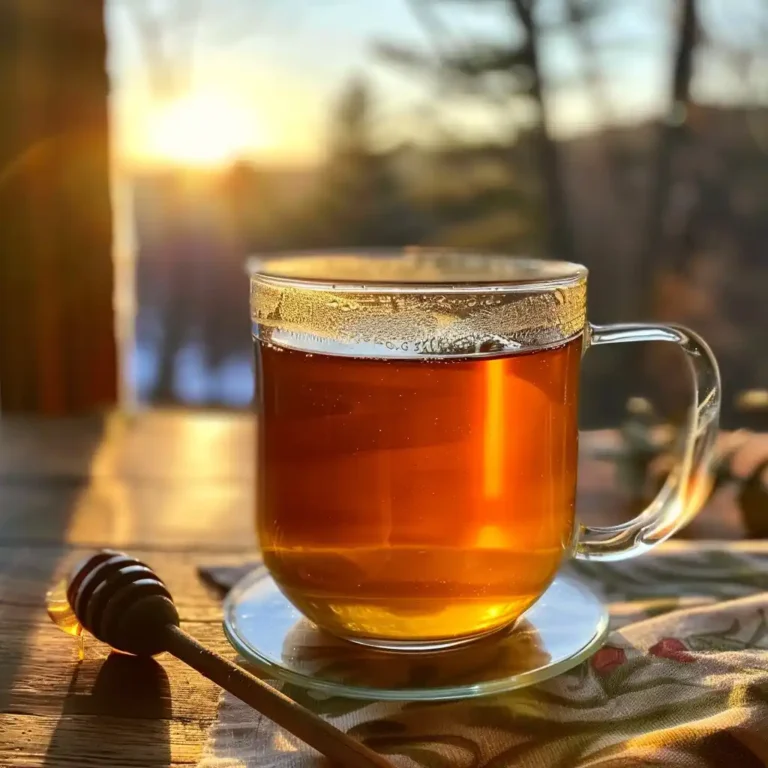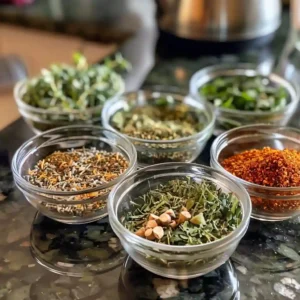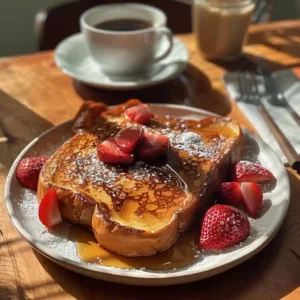Hormone balance tea isn’t just a trendy herbal drink—it’s a natural way I’ve personally used to help manage energy, mood swings, and those unpredictable hormonal shifts. As a busy dad, I often felt off—drained for no reason, gaining weight, and struggling with sleep. When I finally explored natural solutions, hormone balance tea became my daily go-to. It helped me feel more grounded and clear-headed again.
In this article, I’ll share everything I’ve discovered about hormone balance tea—from the key herbs in these powerful blends to how they may gently support your body’s natural rhythms. Whether you’re dealing with PMS, menopause, chronic stress, or trouble sleeping, this tea might offer the comfort and balance you’ve been looking for.
We’ll also cover popular questions like “Which tea is good for hormonal imbalance?” and “What should I drink to balance my hormones?”—all with simple answers and practical advice. Plus, I’ll explain why choosing the right ingredients is essential for making hormone balance tea that actually works.
So grab your favorite mug, and let’s talk about how hormone balance tea can become a soothing, supportive part of your daily wellness ritual.
Table of Contents
Understanding Hormonal Imbalance and the Role of Tea
What Is Hormonal Imbalance?
Hormonal imbalance happens when there’s too much or too little of a hormone in the bloodstream. These chemical messengers affect everything from metabolism and mood to reproductive health and sleep cycles. For me, it showed up as constant fatigue, stubborn weight gain, and stress I just couldn’t shake off. And while I didn’t want to rely on pills, I knew I needed to find a real solution.
How Lifestyle and Diet Influence Hormones
Stress, lack of sleep, processed foods, and even sugar can disrupt our hormonal system. What I found fascinating was how small changes—like adding herbal teas rich in adaptogens—started making a noticeable difference. I cut down on processed snacks and made time for better hydration. But most importantly, I started brewing hormone balance tea every morning as part of my daily ritual.
Why Choose Tea for Hormonal Support?
Herbal teas are a simple, affordable, and natural way to support hormone health. Many of the ingredients in hormone balance tea—like spearmint, red clover, or chasteberry—have been traditionally used for centuries to help with PMS, perimenopause, and stress-related symptoms. Plus, they’re caffeine-free, making them perfect for winding down in the evening or sipping during the day without energy crashes.
What stood out for me is how hormone balance tea felt like a gentle, consistent nudge toward balance, rather than something that jolts your body like synthetic supplements often do. It’s something I could stick with long-term, and that’s what made it work.
Who Can Benefit from Hormone Balance Tea?
From my experience, anyone dealing with:
- Irregular menstrual cycles
- Menopause symptoms like hot flashes
- Low energy and sleep issues
- Stress and mood swings
- Skin breakouts or unexpected weight gain
…might see real improvement by introducing hormone balance tea into their daily habits. It’s not a miracle fix, but over time, with consistency, it can become a cornerstone of your self-care routine. Just remember—every body is different. Track how you feel and adjust as needed.
Key Herbs Found in Hormone Balance Tea
Spearmint: A Natural Androgen Regulator
When I first heard that spearmint could ease hormonal acne and reduce excess hair growth, I didn’t believe it. But after adding it to my morning hormone balance tea for a few weeks, I saw real changes—clearer skin, less bloating, and fewer sugar cravings. Spearmint may help lower androgen levels, which is a big deal if you’re dealing with PCOS or hormonal breakouts. Plus, it’s refreshing and makes a great base for any hormone-supportive blend.
Chasteberry (Vitex): Supporting Progesterone Naturally
Chasteberry, or Vitex, is a game changer—especially for cycle regulation and PMS. It’s known for supporting the pituitary gland, which in turn helps balance progesterone levels. Since I started drinking it about five days a week in my hormone balance tea, I’ve felt less moody and more in tune with my body. It’s especially helpful leading up to a new cycle.
Red Clover: A Gentle Estrogen Booster
Red clover has been part of my evening ritual for months now. It’s rich in phytoestrogens—plant compounds that mimic estrogen—which makes it incredibly helpful for perimenopause or menopause. After my wife started drinking it too, she noticed her hot flashes eased and her sleep improved. It’s gentle, grounding, and deeply nourishing.
Ashwagandha: The Adaptogen That Calms and Rebalances
If I could only pick one herb for stress and hormone support, it would be ashwagandha. As a busy dad, managing work, family, and everything else, stress hits me hard. Ashwagandha helps me wind down, manage cortisol, and sleep better. It fits perfectly into any hormone balance tea—especially at night when you need to relax.
Looking for other ways to support your hormones with ancient ingredients? Don’t miss these Ayurvedic high-protein recipes that pair beautifully with hormone-supportive teas.
Licorice Root and Maca: Energy and Endocrine Support
These two ingredients have become part of my weekly tea rotation. Licorice root helps regulate cortisol and supports the adrenals—just use it in moderation. Maca, on the other hand, is a nutritional powerhouse. I stir it in as a powder after steeping my tea. It’s helped me boost energy, focus, and even stamina—both at work and in the gym.
Whether you’re managing stress, sleep, or hormonal swings, picking the right ingredients for your hormone balance tea is the key to long-term, natural support. Small sips each day have added up to real change for me—and they can for you too.
Print
Hormone Balance Tea: Simple Herbal Remedy That Transformed My Health
A customizable herbal tea blend to support hormone health, reduce stress, and balance your body’s needs naturally.
- Total Time: 17 minutes
- Yield: 2 cups
Ingredients
- 2 cups water
- 1–2 tsp spearmint
- 1–2 tsp red clover
- 1–2 tsp ashwagandha
- Optional: raw honey or lemon
Instructions
- Boil 2 cups of water in a kettle.
- Add 1–2 tsp of each herb (spearmint, red clover, and ashwagandha) into a tea infuser or directly into the pot.
- Simmer for 10–15 minutes covered.
- Steep for another 5–10 minutes.
- Strain into a mug.
- Add raw honey or lemon if desired.
- Sip warm in the morning or evening.
Notes
Make a larger batch and refrigerate for up to 2 days—great served iced. Drink consistently 5 days a week, take 2 days off. Adjust ingredients based on your symptoms or cycle phase.
- Prep Time: 2 minutes
- Cook Time: 15 minutes
- Category: Beverage
- Method: Stovetop
- Cuisine: Herbal Remedy
How to Make Hormone Balance Tea at Home
Choosing the Right Herbal Blend
When I started making my own hormone balance tea, I realized how easy and customizable it could be. You don’t need to be a herbalist to get started—just pick a few key herbs that match your needs. For example:
- For stress and adrenal support: ashwagandha, licorice root
- For menstrual balance: chasteberry, raspberry leaf
- For menopause support: red clover, sage
- For skin and PCOS support: spearmint, nettle
You can buy these herbs loose or in pre-made organic blends. I prefer loose leaf because it gives me control over the strength and flavor of my hormone balance tea.
Step-by-Step Brewing Method
Here’s my go-to method for a calming, hormone-supportive herbal infusion:
- Boil 2 cups of water in a kettle.
- Add 1–2 tsp of each herb into a tea infuser or directly into the pot (spearmint, red clover, and ashwagandha work great together).
- Simmer for 10–15 minutes covered, then steep for another 5–10 minutes.
- Strain into a mug, add a bit of raw honey or lemon if you like.
- Sip warm in the morning or evening.
I often make a bigger batch of hormone balance tea and keep it in the fridge for up to 2 days—it tastes great iced too!
Tips for Better Results
- Be consistent: I drink my tea 5 days a week and take 2 days off to avoid building tolerance.
- Track your symptoms: I use a simple journal to note how I feel after drinking it regularly.
- Adjust as needed: Hormones shift, and your tea can too. For instance, I add more raspberry leaf when my wife is nearing her cycle and more ashwagandha when I’m under pressure.
Safety and Things to Watch
Some herbs like licorice root or chasteberry may interact with medications or aren’t recommended during pregnancy. I always recommend checking with a qualified healthcare provider if you’re unsure. For me and my family, hormone balance tea has become a safe, natural part of our wellness lifestyle—but always do what feels right for your body.
The Best Time to Drink Hormone Balance Tea
Morning Benefits: Start Your Day Balanced
Mornings can feel like a drag—especially when your hormones are working against you. I used to wake up foggy, craving sugar or reaching for my second cup of coffee before 9 AM. But everything shifted when I replaced that second coffee with a warm mug of hormone balance tea made with spearmint and maca. My energy started to feel steady, not spiked.
This morning blend may help:
- Lower early-morning cortisol surges
- Stabilize blood sugar
- Boost metabolism gently—no jitters
Try this combo:
- Spearmint
- Maca root (add as powder after steeping)
- A dash of cinnamon for flavor + blood sugar support
It became my reset button before tackling a busy day with kids, deadlines, and laundry.
Midday Reset: Beat the Slump
Ah, the afternoon crash. We all feel it. That’s when I lean on a calming cup of hormone balance tea made with ashwagandha and nettle. It lifts the fog without the crash that follows sugary snacks or caffeine.
Why it works:
- Ashwagandha supports adrenal health
- Nettle replenishes key minerals
- Together, they ease stress and stabilize mood
Brewing Tip:
Steep herbs like nettle or raspberry leaf for up to 20 minutes. It draws out more minerals—and flavor.
Evening Calm: Prep Your Hormones for Sleep
Evenings are your body’s cue to slow down—but if you’re still buzzing at 9 PM, something’s off. For me, sipping hormone balance tea with red clover, chamomile, and ashwagandha before bed changed everything. I fall asleep easier, stay asleep longer, and wake up refreshed.
My go-to bedtime blend:
- 1 tsp red clover
- 1 tsp chamomile
- ½ tsp ashwagandha root
- Raw honey to taste
Some nights, I swap my usual tea for this ultra-calming saffron latte bomb. It’s soothing, hormone-friendly, and feels like a hug in a mug.
How Often Should You Drink It?
Consistency beats intensity. You don’t need five cups a day—just a smart, steady habit.
Start with:
- 1 cup daily for 2–3 weeks
- Take a 2-day break each week to avoid herbal tolerance
- After 4–6 weeks, adjust based on how your body feels
You can also rotate teas by time of day:
- Morning: Spearmint + maca
- Midday: Nettle + ashwagandha
- Evening: Red clover + chamomile
I followed this pattern during one of the most stressful months of my life—and came out calmer, clearer, and way more stable.
Hormone Balance Tea for Women at Different Life Stages
Teens and Young Adults: Easing Cycles Naturally
Teen years can be tough—acne, cramps, mood swings. I’ve seen how hormone balance tea helped my niece manage PMS symptoms without medication. She uses spearmint and raspberry leaf to ease bloating and calm her mood. These herbs are known for their mild hormone-supportive properties and are safe for most teens when used in moderation.
Tea suggestion for teens:
- Raspberry leaf (1 tsp)
- Spearmint (1 tsp)
- Lemon balm (optional for anxiety relief)
This combo helped her feel more in control of her body during monthly cycles.
Women in Their 30s and 40s: Balancing Fertility and Stress
In this stage, many women juggle careers, motherhood, and the stress that comes with it. That stress can throw off hormone production, especially progesterone and estrogen. My wife’s go-to blend includes chasteberry for cycle regularity and ashwagandha to help with fatigue and irritability.
She brews:
- Chasteberry (½ tsp)
- Ashwagandha (½ tsp)
- Nettle (1 tsp)
- Ginger (just a slice for warmth)
This tea helps her feel more grounded and energized, especially during the luteal phase of her cycle.
Perimenopause and Menopause: Managing the Transition
When my sister-in-law hit her mid-40s, hot flashes and sleep issues became her new normal. Hormone balance teas made with red clover, sage, and licorice root became part of her nightly ritual. These herbs may support estrogen levels, reduce heat surges, and improve rest.
Evening relief tea:
- Red clover (1 tsp)
- Sage (½ tsp)
- Licorice root (¼ tsp – use carefully if you have high blood pressure)
- Chamomile (1 tsp)
After two weeks of nightly use, she felt more rested and noticed fewer sudden temperature shifts.
Post-Menopause: Gentle Daily Support
Even after the big hormonal shift, balance still matters. Nettle and maca root provide minerals and gentle endocrine support. Maca can also help with mood and libido—something many people don’t talk enough about after menopause.
For ongoing support, try:
- Nettle (1 tsp)
- Maca root powder (¼ tsp stirred in after brewing)
- Cinnamon stick (optional)
Hormone Balance Tea for Men—Yes, It Matters Too
Why Men Need Hormone Support
Let’s clear something up—hormone balance tea isn’t just for women. As a dad in my late 30s, I felt the shift: low energy, belly fat that wouldn’t budge, foggy thinking, and dips in motivation. I wasn’t ready to jump into testosterone therapy or synthetic supplements. I needed something natural, steady, and safe. That’s when I gave hormone balance tea a real shot—and it completely changed the game for me.
Top Herbs That Support Male Hormones
Some herbs benefit everyone, but certain ones really shine for men. These are the stars of my daily brew:
- Ashwagandha – Helps lower cortisol and may support testosterone. This one made a huge difference in how calm and focused I felt.
- Maca root – Boosted my stamina and mood—especially noticeable during workouts (and yes, in the bedroom too).
- Nettle root – Great for estrogen balance in men and also supports prostate health.
- Fenugreek – A warming herb often used for libido and healthy testosterone levels. It adds a subtle maple flavor that I’ve grown to love.
My Daily Brew for Men’s Hormone Support
This is my go-to recipe, 4–5 times a week—usually around mid-morning or right after lunch when I need a natural lift.
Ingredients:
- 1 tsp ashwagandha root
- 1 tsp nettle root or leaf
- ½ tsp crushed fenugreek seeds
- ¼ tsp maca powder (stirred in after brewing)
How I brew it:
Steep everything except the maca for 15 minutes. Strain it into a mug, stir in the maca, and sip warm.
Some days I alternate it with this testosterone-boosting ashwagandha coffee smoothie when I’m craving something cold, creamy, and still hormone-friendly.
Results I’ve Noticed
Since building this into my weekly routine, here’s what changed:
- I sleep deeper and wake up ready to go
- I’m sharper at work and more motivated overall
- My workouts feel more effective
- I feel emotionally steady—even on wild days with the kids
It didn’t happen overnight, but with small lifestyle upgrades (like less sugar and more movement), hormone balance tea has become one of the most powerful tools in my wellness toolbox.
When to Avoid These Herbs
Most herbs are safe when used moderately, but it’s still smart to be cautious:
- Avoid licorice root if you have high blood pressure
- If you’re on medications or have hormone-sensitive conditions, talk to your doctor
- Start small and listen to your body—it’ll tell you what works
No matter where you are on your health journey, hormone balance tea might be the gentle support your system’s been craving.
Signs Your Hormones Are Out of Balance—And How Tea May Help
Common Symptoms of Hormonal Imbalance
At first, I ignored the signs. I chalked it up to being tired or stressed. But the symptoms kept showing up—and they were hard to miss:
- Constant fatigue, even after a full night’s sleep
- Mood swings and irritability
- Brain fog and poor focus
- Unexplained weight gain, especially around the midsection
- Irregular cycles (my wife noticed this first)
- Skin breakouts and thinning hair
These were my body’s way of waving a red flag. For both me and my wife, incorporating hormone balance tea into our daily routine became the turning point. It wasn’t a cure-all—but it was a gentle, consistent step toward real balance.
How Herbal Tea Supports Natural Balance
What I love most about hormone balance tea is how easy and calming it is. No harsh reactions—just steady support over time. Here’s how the right herbs can help:
- Ashwagandha may lower cortisol and help you cope with stress
- Red clover’s phytoestrogens support estrogen balance in midlife
- Chasteberry and raspberry leaf promote menstrual regularity
- Nettle and spearmint can clear up skin and reduce excess androgens
- Licorice root and maca may increase energy and libido
It feels more like self-care than medicine. Brew a cup, sit down, and let the body recalibrate.
Looking for gentle ways to support detox and reduce estrogen overload? These low-histamine salad dressings are a great place to start—pair them with your tea for a hormone-friendly routine.
How Long Before You Notice Results?
Your timeline may vary, but here’s what happened in our house:
| Week | What to Expect |
|---|---|
| 1 | Better hydration, less bloating |
| 2 | Improved energy, fewer cravings |
| 3–4 | Mood stability, better sleep |
| 5–6 | Cycle regulation, fewer breakouts |
For me, hormone balance tea helped me feel lighter and more present within the first 7–10 days. My wife started noticing fewer PMS symptoms by her second cycle.
Stick with it. Track your results. Small, daily habits make the biggest changes over time.
When to See a Professional
As powerful as herbal teas can be, they’re not a substitute for medical care. If your symptoms persist, worsen, or disrupt your daily life, talk to your doctor or a qualified practitioner.
That’s what I did—I used hormone balance tea for daily support and backed it up with bloodwork and advice from a holistic MD. It’s about combining nature with knowledge.
Creating a Daily Hormone Tea Routine That Works
Start with One Cup a Day
When I first got into hormone balance tea, I made the classic mistake—I tried too many herbs at once. It was overwhelming, and honestly, unnecessary. What actually worked was starting with just one cup a day. Morning or evening—it’s up to you. Let your body guide you.
Beginner-friendly blend idea:
- Spearmint
- Nettle
This combo is soothing, gentle, and ideal for easing into your routine.
Build Consistency with Habit Stacking
What helped me most wasn’t the tea itself—it was building the habit. I paired it with my morning journaling time. Now, brewing my hormone balance tea is as automatic as brushing my teeth.
Here are a few ways to stack your habit:
- Morning tea: While prepping breakfast
- Afternoon tea: After your midday walk or stretch
- Evening tea: Just before your nightly wind-down
When tea becomes part of something you’re already doing, you’re more likely to stick with it.
Track Your Progress Weekly
I’m a big believer in writing things down—especially when it comes to how your body responds. My wife and I used a basic notebook to log our daily energy, mood, and sleep.
Here’s what we tracked:
- Energy (1–5 scale)
- Mood (calm, anxious, irritable, etc.)
- Sleep quality (hours + how rested we felt)
- PMS or cycle symptoms
After two months, it was crystal clear what was working—and where we could fine-tune our hormone balance tea blends.
Make It a Family Routine
Believe it or not, herbal tea has become a household thing. My daughter sips spearmint in the afternoon to help her focus on homework. My wife brews her hormone support blend at night. I stick with my ashwagandha-maca mix before bed. It’s a ritual we’ve all grown to love.
Need another idea to include in your family wellness plan? Check out this Ayurvedic chia pudding—it pairs beautifully with your evening tea and supports hormone health with grounding ingredients.
Rotate Herbs Every Few Weeks
Our bodies aren’t static—so our tea blends shouldn’t be either. Every 4–6 weeks, I switch up my herbs to match how I feel or what the season brings.
My rotation schedule:
- Month 1: Adrenal support (ashwagandha, licorice root)
- Month 2: Liver detox and hormone clearance (dandelion root, burdock root)
- Month 3: Estrogen balance and cycle support (red clover, raspberry leaf)
This keeps things effective and interesting—because yes, even tea can feel exciting when it supports your goals.
FAQs About Hormone Balance Tea
Which tea is good for hormonal imbalance?
From my experience, several herbal teas can gently support hormone balance. My top picks include:
- Spearmint tea – great for reducing excess androgens, helpful for acne and PCOS
- Red clover tea – contains phytoestrogens that may support estrogen levels during perimenopause or menopause
- Chasteberry (Vitex) tea – supports progesterone and menstrual regularity
- Ashwagandha tea – helps lower cortisol and manage stress-related imbalances
I usually start with one of these teas depending on what my body needs that week. Some people benefit from rotating them, especially during different phases of their cycle.
What should I drink to balance my hormones?
Hormone balance teas are my go-to, but I also stay hydrated with plain water and drink:
- Warm lemon water in the morning to support liver detox
- Nettle tea for minerals and adrenal support
- Raspberry leaf tea to tone the uterus and support menstrual health
These drinks may not instantly “fix” hormones, but over time, they can support your body in finding balance.
Which herb is the best for balancing hormones?
If I had to choose just one, ashwagandha has made the biggest impact for me. It helps reduce stress, improves sleep, and indirectly supports testosterone and thyroid function. For women, chasteberry is a standout—it’s known for regulating menstrual cycles and easing PMS.
That said, the “best” herb depends on your specific hormonal concern. That’s why I like to blend based on whether I’m supporting stress, estrogen, progesterone, or detox.
What tea flushes estrogen?
There’s no magic flush, but some teas are traditionally used to support liver function, which helps your body process excess estrogen. I use:
- Dandelion root tea
- Milk thistle (sometimes in tincture form)
- Green tea (decaf if needed)
These teas may help your liver metabolize estrogen more effectively, especially helpful if you’re dealing with estrogen dominance symptoms like bloating, mood swings, or tender breasts.
I usually pair these with fiber-rich foods and exercise for better detox support.
Sip Your Way to Natural Hormone Support
Hormone balance tea has become more than just part of my wellness routine—it’s a daily act of care I share with my family. Whether you’re dealing with PMS, menopause, chronic stress, or just feeling a little off, there’s something empowering about turning to nature’s most calming herbs.
With blends that include ashwagandha, red clover, spearmint, and chasteberry, you might notice:
- Deeper sleep
- Improved mood
- More energy
- Clearer skin
But remember—it’s not about instant results. It’s about small, mindful steps. One cup at a time. One calming ritual at a time.
Start simple:
- Brew one cup daily
- Track your progress
- Adjust your blend every few weeks
No single tea will do it all—but hormone balance tea can be a foundational part of your path to feeling balanced and well.
Looking for more ideas? Don’t miss our Facebook page for wellness tips, or explore fresh hormone-friendly inspiration over on Pinterest.
Here’s to better balance—one soothing sip at a time.



